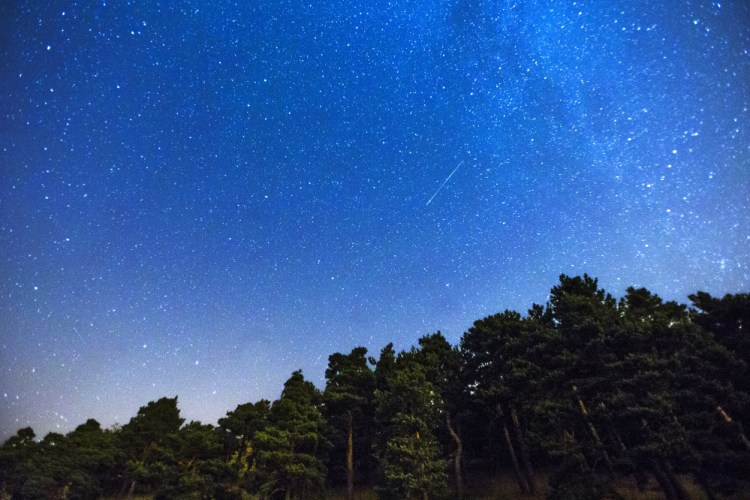The Perseid meteor shower is back and can be seen through Monday.
The celestial show peaks every August when Earth passes through the debris trails of the comet Swift-Tuttle, which passes near Earth every 133 years on its trip around the sun.
This year’s meteor viewing arrived with a good forecast.
“The moon is very favorable for the Perseids this year, and that’ll make the Perseids probably the best shower of 2018 for people who want to go out and view it,” NASA meteor expert Bill Cooke told Space.com. He added that the moon “will be a thin crescent and set early, leaving a dark canvas for the meteors’ bright streaks and fireballs.”
Viewing results tend to change year to year. This year’s viewing may make up for last year’s underwhelming showing when the glare of a full moon made if difficult to see the shower well.
Cooke said sky watchers could see 60 to 70 meteors an hour during its peak this year. The Perseids are known for “fireballs” which are grain-size pieces of dust that burn up and radiate as they travel through the atmosphere at 37 miles per second.
When is the best time to watch the shower?
The best time to see the shower is after about 2 a.m. when the Perseus constellation is high in the sky.
No special equipment is necessary to see the meteors. It’s suggested that viewing is better with the naked eye than with binoculars or telescope because viewers can take in a wider view.
Send questions/comments to the editors.



Success. Please wait for the page to reload. If the page does not reload within 5 seconds, please refresh the page.
Enter your email and password to access comments.
Hi, to comment on stories you must . This profile is in addition to your subscription and website login.
Already have a commenting profile? .
Invalid username/password.
Please check your email to confirm and complete your registration.
Only subscribers are eligible to post comments. Please subscribe or login first for digital access. Here’s why.
Use the form below to reset your password. When you've submitted your account email, we will send an email with a reset code.